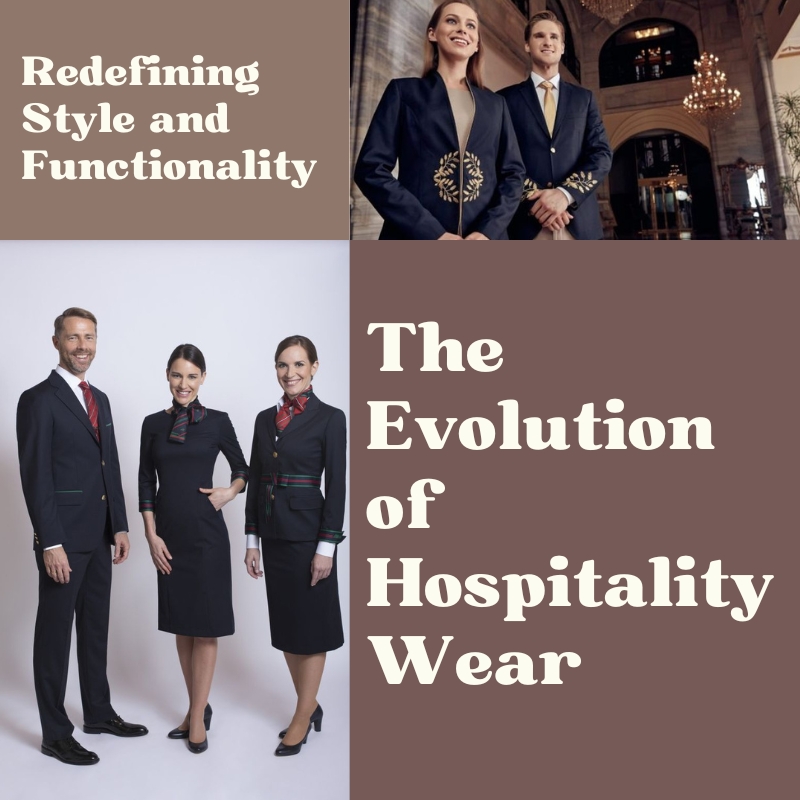
Redefining Style and Functionality: The Evolution of Hospitality Wear
The hospitality industry thrives on creating memorable guest experiences, and hospitality wear plays a crucial role in this process. It reflects a brand’s identity, enhances functionality, and ensures employee comfort. As the industry evolves, so does the design and purpose of uniforms, blending style and practicality in innovative ways.
The Role of Hospitality Wear
First impressions matter, and hospitality wear is often the first point of visual interaction between staff and guests. It communicates professionalism, reinforces brand identity, and builds trust. From sophisticated attire for luxury hotels to more casual designs for cafés, uniforms help set the tone of the establishment while ensuring employees feel confident and comfortable.
The Shift Towards Functionality
In the past, hospitality wear focused more on formality, but today’s workforce demands practical uniforms that can endure the fast-paced environment. Breathable, wrinkle-resistant materials and ergonomic designs have become the norm. Stretch fabrics, moisture-wicking properties, and stain resistance ensure uniforms remain sharp throughout the shift.
Sustainability in Hospitality Wear
Eco-friendly fabrics like organic cotton, recycled polyester, and bamboo blends are gaining traction in the hospitality industry. Many brands now explore circular fashion initiatives, recycling worn-out uniforms into new garments to reduce environmental impact and promote sustainability.
Hospitality Wear Across Departments
In hospitality, each department has unique needs, and uniform is designed to cater to those requirements while maintaining brand cohesion.
1.Front Desk Uniforms
Front desk staff are the first point of contact for guests, so their uniforms must reflect professionalism and approachability. Hospitality wear for front desk employees often includes tailored blazers, crisp shirts, and skirts or trousers that complement the overall brand aesthetic. The focus is on comfort and style, ensuring staff look polished and are able to perform administrative tasks without restriction.
2.Housekeeping Uniforms
Housekeeping staff require uniforms that prioritize comfort, durability, and functionality. Hospitality wear for housekeeping often includes comfortable, breathable fabrics like cotton or polyester blends. Practical features like stain resistance and easy-to-move-in designs are essential. Housekeeping uniforms typically consist of polo shirts, trousers, or dresses that convey cleanliness and organization, aligning with the high standards of the industry.
3.Bellman Uniforms
Bellmen, who assist guests with luggage and provide concierge services, need uniforms that are both stylish and functional. Hospitality wear for bellmen typically includes tailored jackets, waistcoats, and trousers, designed for ease of movement while exuding professionalism. Accessories such as hats and gloves may also be incorporated to enhance the uniform’s formal look, making bellmen easily recognizable to guests.
4.Event Staff Uniforms
Event staff play a pivotal role in ensuring that functions run smoothly. Whether it’s a wedding, a business conference, or a special event, hospitality wear for event staff must be both stylish and practical. Uniforms often consist of sleek suits, elegant dresses, or attire tailored to the event’s theme. The focus here is on versatility, allowing staff to move freely and remain presentable throughout long hours.
5.Spa Attire
In a spa environment, the uniform must reflect the serene, calming atmosphere while also being functional for staff. Hospitality wear for spa employees typically includes comfortable, soft fabrics such as cotton, bamboo, or linen. Spa uniforms may consist of tunics, comfortable pants, or dresses, with features that promote relaxation, such as moisture-wicking and stretchable materials. The attire should enhance the staff’s ability to perform services while contributing to a tranquil ambiance.
Uniform Accessories
Accessories play an important role in enhancing hospitality wear across all departments. Items like ties, scarves, aprons, hats, and name tags not only provide a polished look but also serve practical purposes. Uniform accessories often help tie together the overall theme, color palette, and branding of the business, ensuring that employees appear cohesive and professional. Accessories also contribute to the functional aspects of the uniform, such as providing extra storage or keeping staff cool during long shifts.
Style Meets Brand Identity
Design plays a key role in hospitality wear, helping to reinforce a brand’s identity. Customizations like embroidered logos, unique colors, and designs that reflect the establishment’s atmosphere make uniforms an integral part of the guest experience.
The Human Touch in Hospitality Wear
While technology shapes modern uniform design, the human aspect remains essential. When staff feel good in their uniforms, their confidence and morale improve, leading to better guest interactions. Involving employees in the uniform design process can further enhance satisfaction.
FAQs
1.Why does hospitality wear important in the industry?
Hospitality wear reflects professionalism, builds trust, and reinforces brand identity, contributing to a cohesive guest experience.
2.What materials are used in modern hospitality uniforms?
Modern hospitality wear often includes breathable, moisture-wicking, and stain-resistant fabrics for comfort and durability.
3.How does sustainability influence hospitality wear design?
Sustainable fabrics like organic cotton and recycled polyester are now commonly used, promoting environmental responsibility.
4.How can businesses customize hospitality wear?
Businesses can personalize uniforms with embroidered logos, unique color schemes, and designs that align with their brand.
5.Why is comfort important in hospitality wear?
Comfortable hospitality uniform boosts employee performance and confidence, ensuring better interactions with guests.

